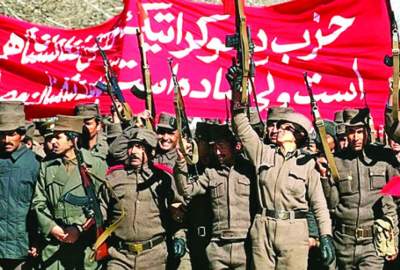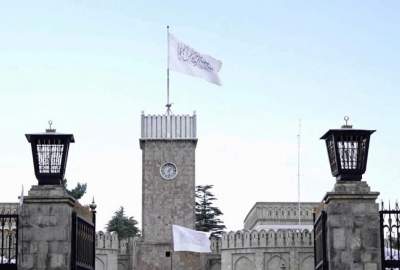The Ministry of Foreign Affairs (MoFA) on Wednesday welcomed the United Nations Security Council's decision to include Daesh’s Khorasan branch on its sanctions list.
Publish dateThursday 16 May 2019 - 10:28
Story Code : 185164
The UN said the militant group has carried out dozens of terror attacks in Afghanistan and Pakistan.
“In accordance with paragraph 13 of resolution 1822 (2008) and subsequent related resolutions, the ISIL (Da'esh) and Al-Qaida Sanctions Committee makes accessible a narrative summary of reasons for the listing for individuals, groups, undertakings and entities included in the ISIL (Da'esh) and Al-Qaida Sanctions List,” the UNSC said in a statement on Tuesday.
“All groups which are fighting against the brave Afghan security forces, in our perspective, they are terrorists, and those which have a role in destabilizing Afghanistan are also terrorists. We welcome the move by the UN to put the terrorists on its backlists and we hope that this process will continue so that no terror group is able to operate freely,” said Sibghatullah Ahmadi, spokesman to Afghan Foreign Ministry.
A spokesman for Ministry of Interior Affairs, Nusrat Rahimi, said they also welcome the move and added that Daesh's hideouts and strongholds have been eliminated in Afghanistan.
“We welcome the decision," Rahimi said. "Daesh’s nucleus has been eliminated. Daesh’s roots in Afghanistan have been taken out. Few of them exist in Kunar and they will be eliminated too.”
The UN statement also states Daesh's Khorasan branch (ISIL-K) has carried out numerous attacks since its formation, including:
• In April 2015, the group claimed responsibility for a bombing at a bank in Jalalabad, Afghanistan that killed at least 34 people and injured over 120.
• In September 2015, the group carried out an assault on police checkpoints in eastern Afghanistan, killing at least two police officers.
• In November 2016, the group claimed responsibility for a suicide bombing at a Sufi shrine in Quetta, Pakistan that killed at least 50 people and injured over 100 people.
• In December 2017, the group claimed responsibility for multiple suicide bombings at a Shi’ite cultural center and news agency in Kabul, Afghanistan that killed more than 41 people, including women and children, and injured over 84 people.
• In July 2018, the group claimed responsibility for a suicide bombing outside a polling station in Quetta, Pakistan that killed at least 31 people and injured over 24 people. In the same month, the group also claimed responsibility for an attack in the southwestern province of Baluchistan that killed 128 people, including a politician running for a provincial legislature.
• In November 2018, the group claimed responsibility for a suicide attack in northwestern Pakistan, targeting Shi’ite Muslims in a market in Orakzai, killing at least 33 people and injuring 56 others.
But, what would be the impacts of the sanctions on curbing threats of Daesh in Afghanistan?
“Daesh has targeted innocent people in their attacks in Afghanistan. I warmly welcome the decision by the United Nations Security Council to impose sanctions on those terrorist groups whose hands are stained with the blood of the people. Daesh whether I call it a regional or ultra-regional group is involved in tragic incidents in Afghanistan. There is possibility that blacklisting of these groups will bring some changes in the situation, but I am not sure about it too much. However, the terrorist groups should be put on the blacklist and it’s a good move,” said senator Anarkali Honaryar.
“You know that Daesh as one of the most dangerous terrorist groups has recently started its activities in Afghanistan. Daesh’s Khorasan branch is also part of Daesh which has taken roots from Iraq and Syria. The UN has taken a good step to put it on its blacklist and this will have positive impacts to reduce Daesh’s activities. UN should impose strick sanctions on Daesh’s money transactions,” said Azim Qoyash, a political analyst in Kabul.
On January 26, 2015, Daesh announced Afghanistan-Pakistan and nearby regions as its Khorasan province with Hafiz Saeed Khan as its governor and Abdul Rauf as his deputy - after both swore an oath of allegiance to the group’s leader Baghdadi.
On February 9, 2015, Mullah Abdul Rauf was killed by a NATO airstrike, and his replacement, Hafiz Wahidi, was killed by the Afghan security forces on March 18, 2015. Hafiz Saeed Khan, the Emir of Daesh’s Khorasan Province, was reportedly killed in a US drone strike in eastern Afghanistan on July 25, 2016.
When reports initially surfaced in the media about the emergence of Daesh in Afghanistan, the Afghan political and security leadership tried to play down the rumors of growing influence of the group in the country and said it did not have the capacity to infiltrate and carry out attacks in Afghanistan.
Daesh’s First Attack on Afghanistan
On Apr 18, 2015, Daesh launched its first terrorist attack in Afghanistan when a suicide bomber killed 33 people outside a bank in Jalalabad city in eastern Nangarhar province.
The attack in Jalalabad was a major blow to the Afghan government which had continued to reject claims of the group’s presence in Afghanistan. Gradually, Daesh launched a onslaught of deadly attacks on the Afghan people especially the Shiite minority.
Over 60 Attacks Hit Afghanistan In 2017
Between early 2015 and the end of 2017, the group had carried out over 60 attacks in Afghanistan – many of which were deadly suicide bombings.
These attacks were:
• The attack on Tabyan Cultural Center in Kabul - 42 killed and 84 wounded
• The attack on Jawadia Mosque in Herat - 29 killed and 46 wounded
• The attack on Shamshad TV in Kabul - 2 killed and 21 wounded
• The attack on Imam Zaman mosque in Kabul - 50 killed and 46 wounded
• The attack on a mosque in Ghor province - 33 killed and 46 wounded
• The attack on al-Zahra Mosque in Kabul - 7 killed and 21 wounded
UN figures on civilian casualties 2018
According to a United Nations report released last month, the body recorded the highest recorded level of civilian casualties in 2018.
Based on the report, the UN Assistance Mission in Afghanistan (UNAMA) and the UN Human Rights Office. The report documented 3,804 civilian deaths in 2018. Among the dead were 927 children, the highest recorded number of boys and girls killed in the conflict during a single year.
In total, UNAMA documented 10,993 civilian casualties (3,804 deaths and 7,189 injured), representing a five per cent increase in overall civilian casualties and an 11 per cent increase in civilian deaths compared to 2017.
UNAMA attributed the majority of civilian casualties –63 per cent– to Anti-Government Elements (AGEs), 37 per cent to Taliban, 20 per cent to Daesh/Islamic State Khorosan Province (ISKP), and 6 per cent to undetermined AGEs. Pro-Government Forces caused 24 per cent of civilian casualties --14 per cent by Afghan national security forces, six per cent by international military forces, as well as four per cent by other pro-Government armed groups and forces.
Key factors contributing to the significant increase in civilian casualties were a spike in suicide attacks by AGEs, mainly Daesh/ISKP, as well as increased harm to civilians from aerial and search operations by Pro-Government Forces. 2018 witnessed the highest number of civilian casualties ever recorded from suicide attacks and aerial operations
Source : Afghan Voice Agency(AVA)
avapress.com/vdcepn8zejh8vzi.1kbj.html
Tags
Top hits







